I'm struggling having this measure to work.
I would like to have a measure that will sum the Value only for the max version of each house.
So following this example table:
|---------------------|------------------|------------------|
| House_Id | Version_Id | Value |
|---------------------|------------------|------------------|
| 1 | 1 | 1000 |
|---------------------|------------------|------------------|
| 1 | 2 | 2000 |
|---------------------|------------------|------------------|
| 2 | 1 | 3000 |
|---------------------|------------------|------------------|
| 3 | 1 | 5000 |
|---------------------|------------------|------------------|
The result of this measure should be: 10.000 because the house_id 1 version 1 is ignored as there's another version higher.
By House_id the result should be:
|---------------------|------------------|
| House_Id | Value |
|---------------------|------------------|
| 1 | 2000 |
|---------------------|------------------|
| 1 | 3000 |
|---------------------|------------------|
| 2 | 5000 |
|---------------------|------------------|
Can anyone help me?
EDIT:
Given the correct answer @RADO gave, now I want to further enhance this measure:
Now, my main Data table in reality has more columns. What if I want to add this measure to a table visual that splits the measure by another column from (or related to) the Data table.
For example (simplified data table):
|---------------------|------------------|------------------|------------------|
| House_Id | Version_Id | Color_Id | Value |
|---------------------|------------------|------------------|------------------|
| 1 | 1 | 1 (Green) | 1000 |
|---------------------|------------------|------------------|------------------|
| 1 | 2 | 2 (Red) | 2000 |
|---------------------|------------------|------------------|------------------|
| 2 | 1 | 1 (Green) | 3000 |
|---------------------|------------------|------------------|------------------|
| 3 | 1 | 1 (Green) | 5000 |
|---------------------|------------------|------------------|------------------|
There's a Color_Id in the main table that is connected to a Color table. Then I add a visual table with ColorName (from the ColorTable) and the measure (ColorId 1 is Green, 2 is Red).
With the given answer the result is wrong when filtered by ColorName. Although the Total row is indeed correct:
|---------------------|------------------|
| ColorName | Value |
|---------------------|------------------|
| Green | 9000 |
|---------------------|------------------|
| Red | 2000 |
|---------------------|------------------|
| Total | 10000 |
|---------------------|------------------|
This result is wrong per ColorName as 9000 + 2000 is 11000 and not 10000. The measure should ignore the rows with an old version. In the example before this is the row for House_Id 1 and Color_Id Green because the version is old (there's a newer version for that House_Id).
So:
- How can I address this situation?
- What If I want to filter by another column from (or related to) the Data table such as Location_Id? It is posible to define the measure in such a way that could work for any given number splits for columns in the main Data table?
